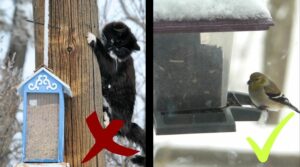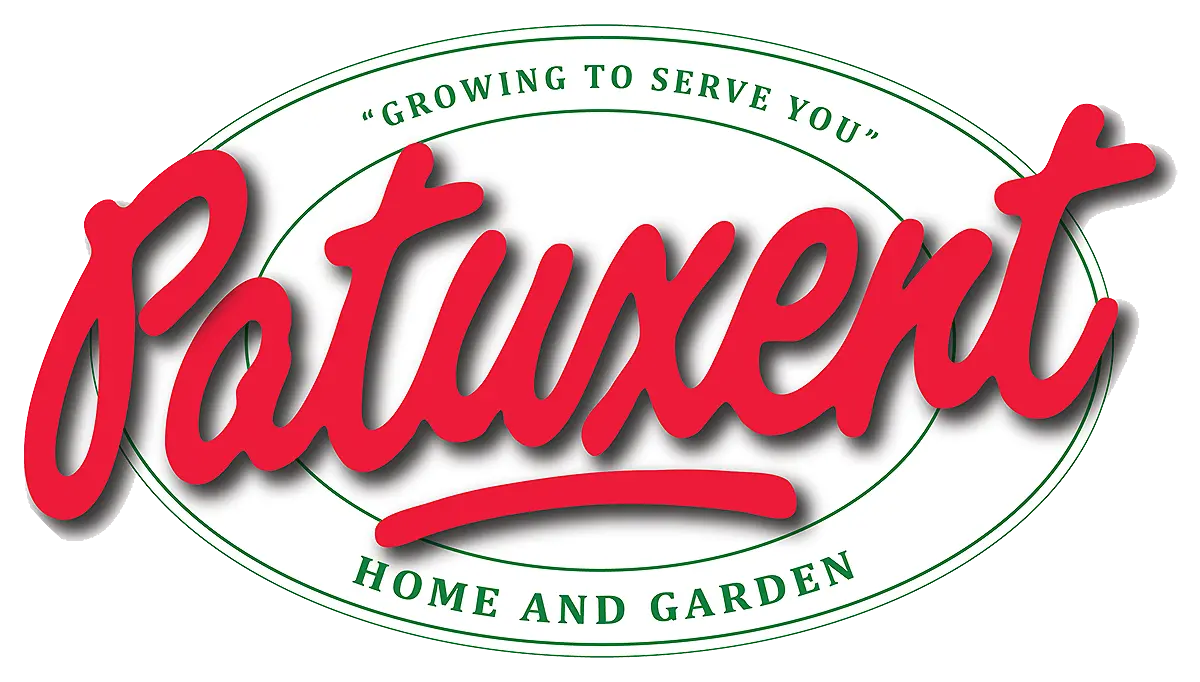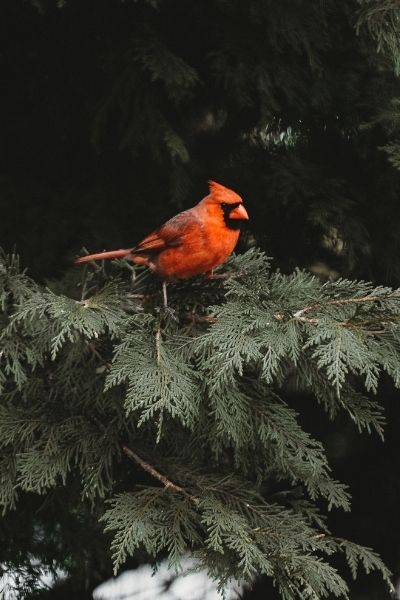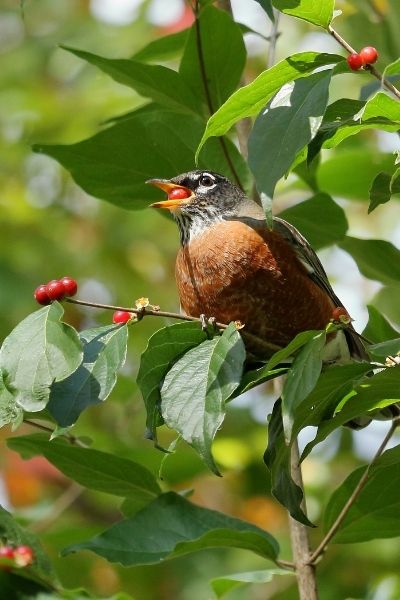As you plan out how to add color to your garden this season, please remember our feathered friends: the backyard birds and the migratory birds that frequent our backyards every winter in Maryland.
These birds are crucial to our native ecosystems, including their role as local pollinators for your trees, shrubs, and perennials. Since food, shelter, and water are more difficult for them to find in colder months, we can step in to help fill that need and enjoy some great birdwatching as a reward.
It’s important to feed your native birds the right way, so they stay safe, warm, and well-fed this winter. Learn how to prep your garden to be bird-friendly, how to set up a squirrel-proof bird feeder, and how to attract backyard birds consistently.
Plant Food and Shelter In Your Garden
The first step towards supporting backyard birds in the winter is to provide the kinds of trees and shrubs they love in your backyard landscaping, so they can eat well all year long. Plant a few trees and shrubs that will naturally provide food and shelter. Planting native options are even better since these plants provide berries our local avian community co-evolved with and prefer to eat.
Here are some great options that your backyard birds will enjoy –
- cardinal resting in arborvitae branch in winter
- native robin eating red berries from fall shrub in natives garden
- Bayberry
- Winterberry Holly
- Viburnum
- Aronia Shrubs
- Hackberry
- Spicebush
- Virginia creeper
- Serviceberry
- Beautyberry
- Elderberry
- Here is a great list of more native plants that feed local birds in the NE United States.
- Dogwoods
- Mountain Laurels
- Arborvitaes
- Cedars
- Spruces
- Boxwoods
- Pines
- Holly Trees (some birds even eat these berries too)
- Ornamental Grasses (cut them down in February so birds don’t build their spring nests in grasses that you’re planning to take down)
Another source of shelter for birds includes leaving dead trees up. As long as a dead tree isn’t at risk of falling on your home or across roads, many birds make their homes in dead tree trunks. You can set up nest boxes instead and those work well, especially for smaller birds like titmice, wrens, or sparrows.

Leave Your Fall Garden Alone
You’ve enjoyed your stunning fall garden all season, with coneflowers and coreopsis blooms lasting late into the year. Another great way to help feed the birds this winter is to NOT cut all of your perennials back once they’re spent. Leave some uncut after they’ve gone to seed and are dormant so that birds can eat the seeds. Here’s a good resource to look for more tasty native perennials birds love.
You can also forget raking and skip mulching all of your leaves and branches – leaving the natural debris from fall means the birds have places to hunt for worms and branches to hide between. You can keep an area of your yard dedicated to a brush pile – keep all of your spare branches and spent Christmas greenery in one place. This will provide a perfect get-away spot for any backyard birds trying to evade predatory raptors in the winter.

Set Up A Winter Water Feature
Cement bird baths can be a beautiful addition to a garden in most seasons, but winter birds can’t bathe in or drink from frozen water. It’s not a good idea to add a heating element to a cement birdbath since the temperature changes in the water that soaked into the cement can cause cracking.
Freely available water is important for backyard birds – it’s best to set up a heated birdbath or put a waterproof heating element into a basin made from a weather-proof material. A weather-proof fountain with moving water can also help provide water to the birds. (Note: never leave a heated birdbath or water heater on without water).
Setting up a safe and easily accessible water source is a good way to attract birds to your yard. This is sometimes the first step in teaching your local birds that your yard is going to be a consistent source of food since they will seek water out and find your food nearby.

Position Your Bird Feeder In The Perfect Spot
A good bird-feeder can help feed all types of birds through the cold winter months, but if it’s in the wrong spot it can cause more harm than good. You’ll want to make sure your bird feeder is:
- As squirrel-proof as possible to prevent competition for resources,
- Away from brush or other places where cats and foxes could set up an ambush,
- Placed just close enough to shelter so birds can make a quick get-away if need be,
- Placed away from reflective glass windows to prevent window-pane crashes and serious injuries,
- Big enough to fit a lot of birdseed or suet for less frequent refills and more room for sharing with other birds,
- Covered enough to protect the seed from snow or moisture so birds can still get to them in storms,
- Easy to clean and refill to prevent mildew or spoiled birdfeed.
Unfortunately, there are few bird feeders that are truly squirrel-proof – these fluffy tricksters are ambitious and crafty when it comes to getting into squirrel-proof feeders. There are some spring-loaded kinds, such as the Squirrel X feeder we stock, that will close with the weight of a squirrel. As long as they don’t break, they’re great for frustrating your squirrels! If you want, leave some corn cobs or other squirrel favorites on the other side of your garden so they go eat there instead.
Try setting up a smooth bird feeder pole that has no grip, with a hook or other element to hang your feeder from. This shepherd’s hook bird feeder style works well – the feeder is up high, but not hung from a place where other animals can easily get to it too.

Stock Up On High-Quality Food For Birds
Not all birdseed mixes are made equal. Many bird species in our local ecosystems have certain kinds of foods or seeds that they prefer. They will even seek these favorite treats out specifically if possible. There are generic birdseed mixes available at pet stores, but those are usually not the kinds of seeds our backyard birds eat.
Using food sources that are rich in fat and nutrients and made of the kinds of food birds love means that your feathered friends will come back consistently throughout the winter. For example, native robins like mixes that include dried fruit, while jays enjoy sunflower seeds. Here’s a list of common species of birds we see in Maryland backyards – once you identify what’s in your yard you can research which kinds of seeds they like.
Look for high-quality wild birdfeed that includes these types of backyard bird favorites:
- Sunflower
- Peanuts
- Cracked Corn
- Safflower
- Thistle/Nyjer Seeds
- Fruit
- Millet
- Suet (or rendered fat, available in cakes for birdfeeders. You could substitute peanut butter but it’s more expensive than suet)
- Mealworms
Store your birdseed in a container with a lid in a cool, dry place. Don’t feed birds any feed that has spoiled, sprouted, or grown mildew).

Keep Your Food Source Consistent
Once your local avian neighbors find out you have their favorite treats ready to go in the cold of winter, in a place where it’s safe to eat, then they will keep coming back. They’ll then start to rely on your garden as a reliable food source and make it a habit to visit. Make it your habit to keep your bird feeder full of fresh seeds.
This is why larger feeders are sometimes easier, but smaller ones are better if you have fewer birds visiting (so seeds don’t spoil in the feeder). Planting native plants, trees, and shrubs that provide food for you can also help reduce how often you need to refill the feeders; in the coldest months, your bird feeder might be a major food source when most native berries are gone.
You can get a suet feeder, or mix suet with birdseed to make suet bird “cookies” that fit inside of mesh bird feeders. If you want to really get specific, let one of our staff know which kinds of birds you see most often and we can help you stock up on the kinds of food those birds love.
With good food, good feeders (both available at Patuxent Nursery), and a little luck, you’ll attract tons of backyard birds this winter. You could attract so many you could even start singing ‘Feed The Birds’ just like in Mary Poppins! We won’t judge.
Stock up on everything you’ll need for local birds at Patuxent Nursery this winter, from the native plants they live in and eat to the feeders and seeds needed to supplement their food sources. Don’t forget your binoculars and get ready for some world-class bird-watching!






Leave a Comment
You must be logged in to post a comment.